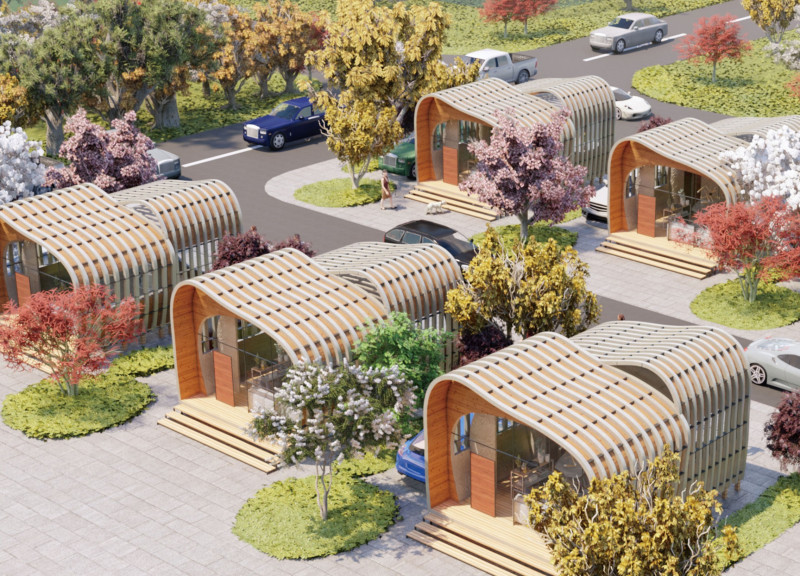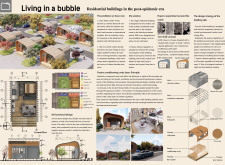5 key facts about this project
The design features a dual-function residential building that responds to the challenges associated with the COVID-19 pandemic. Located in a context focused on health and safety, the structure can be used for everyday living or converted to accommodate individuals needing isolation due to infectious diseases. This approach merges the need for practical living spaces with strategies aimed at promoting well-being.
Passive Ventilation
A notable aspect of the building is its passive ventilation system. This system reduces the potential transmission of viruses within the indoor environment. By improving air quality without needing extensive mechanical processes, the design prioritizes the health of its residents.
Climate Regulation
The project incorporates techniques for passive climate regulation. It features an air layer that helps maintain comfortable temperatures throughout the year. In warm weather, the system effectively removes excess heat, while in colder months, it minimizes heat loss, providing comfort regardless of the season.
Two-Shell Concept
The design employs a two-shell concept, which is inspired by the principles seen in the Smith House. This architectural method enhances the building's performance by adapting to local weather conditions. By optimizing the building envelope, it improves energy efficiency and helps keep indoor environments comfortable.
Functional Layout
The arrangement of living spaces demonstrates flexibility, with units designed for typical residential use that can be quickly adapted into negative-pressure wards. This ability to shift use supports timely responses during health emergencies and ensures that the building can serve various needs while retaining its residential character.
Inside, the structure features steel for connection points, hard low-emissivity glass for effective temperature control, and wooden components that bring a natural touch. These materials contribute to the design’s overall functionality and appeal, creating a cohesive living environment.



















































